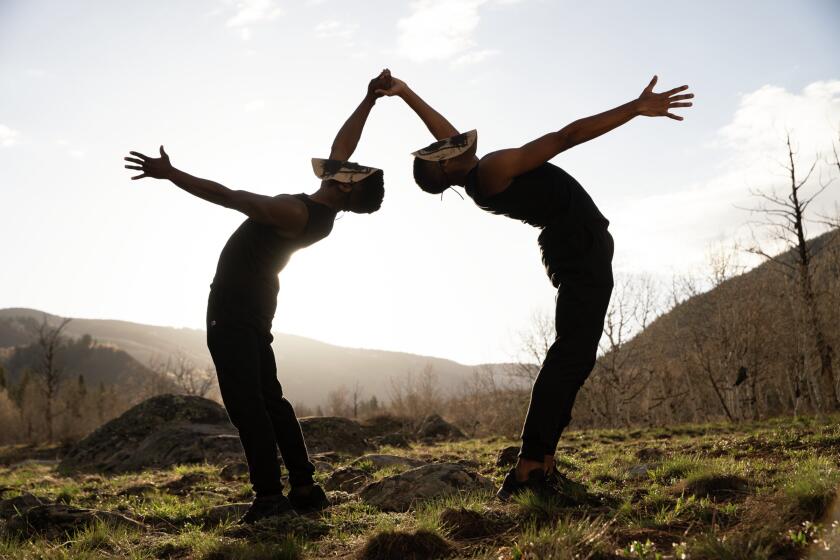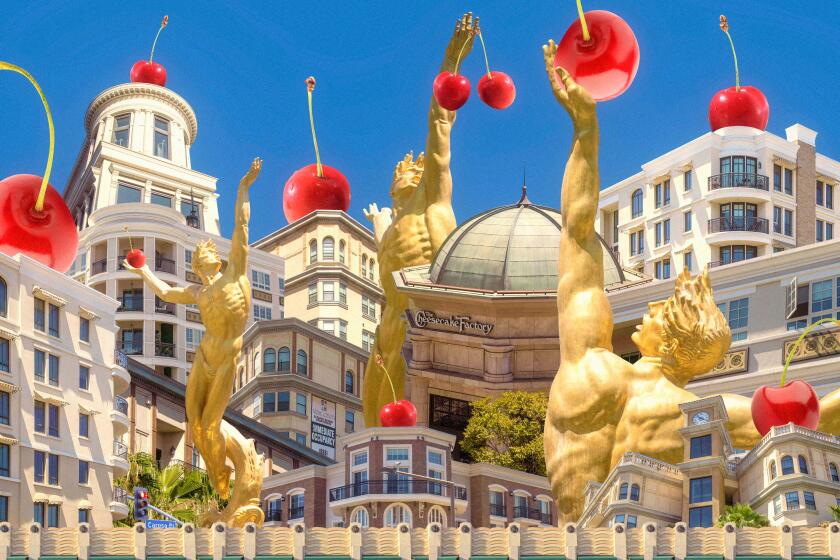How to make malls great again (or maybe for the first time)
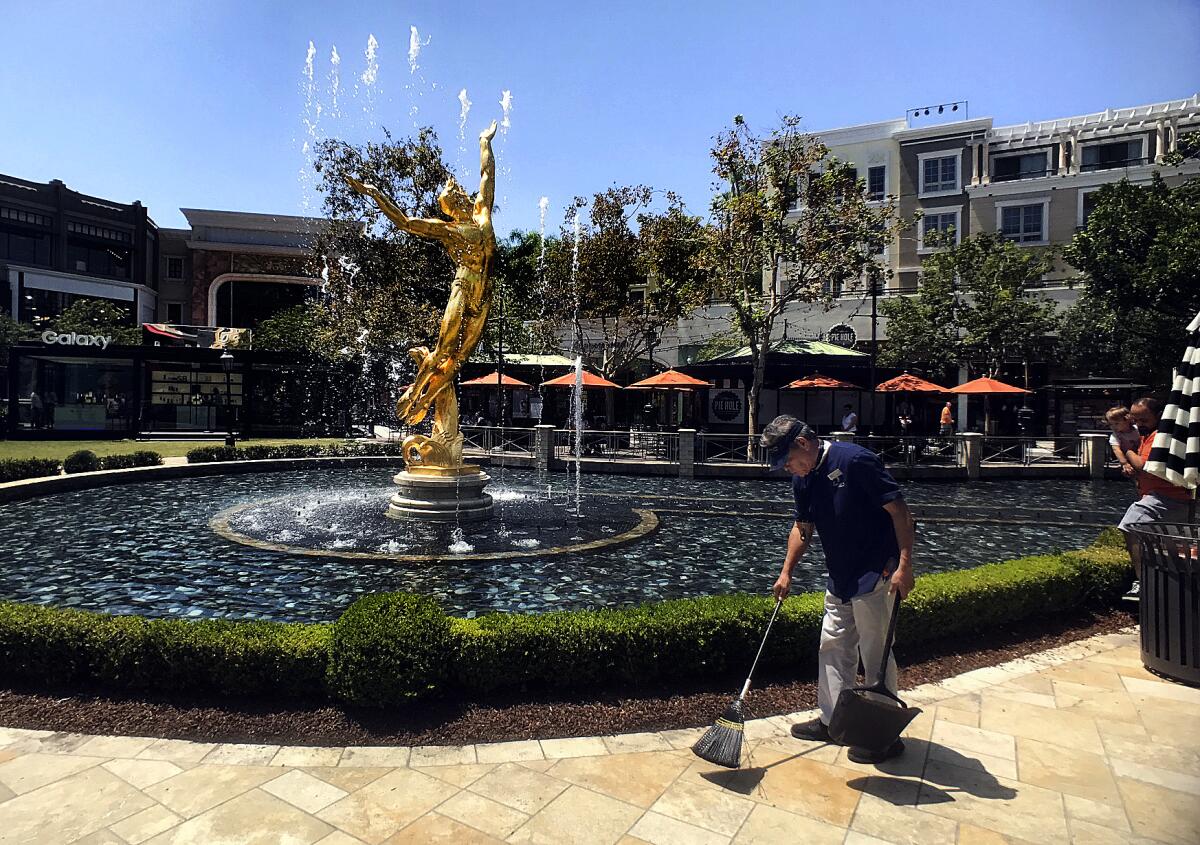
- Share via
On the Shelf
'Meet Me by the Fountain'
By Alexandra Lange
Bloomsbury: 320 pages, $28
If you buy books linked on our site, The Times may earn a commission from Bookshop.org, whose fees support independent bookstores.
In Los Angeles, we find ourselves in a mayoral election that has become about malls. That’s thanks to candidate Rick Caruso, developer of glossy “lifestyle centers,” such as the Grove and the Americana at Brand, that have become talking points and press conference backdrops in the squeaker of a race against Rep. Karen Bass for L.A.’s top office.
Naturally, there have been plenty of questions about whether someone like Caruso, known for building semifictional utopias/dystopias of consumerism — remember those $1,000 dinners atop a moving trolley? — can govern something that is more than a simulacrum of public space. Malls are central to public life, even as they keep public life at arm’s length.
Some may resemble town squares, but everything about that square is private and therefore controlled — or, as the promotional literature likes to say, “curated.” That control extends to aesthetics, music and, of course, the selection of retail outlets and dining options, which in turn control the class of consumer a mall attracts. Private maintenance and security help relegate the eruptions of city life — waste, homelessness, those who don’t adhere to codes of behavior and dress — to the periphery.
The mayoral race, along with a pandemic that is hopefully winding down, makes it a good time to think about malls and the purposes they serve. Enter New York-based architecture critic Alexandra Lange’s latest book, “Meet Me by the Fountain: An Inside History of the Mall.”
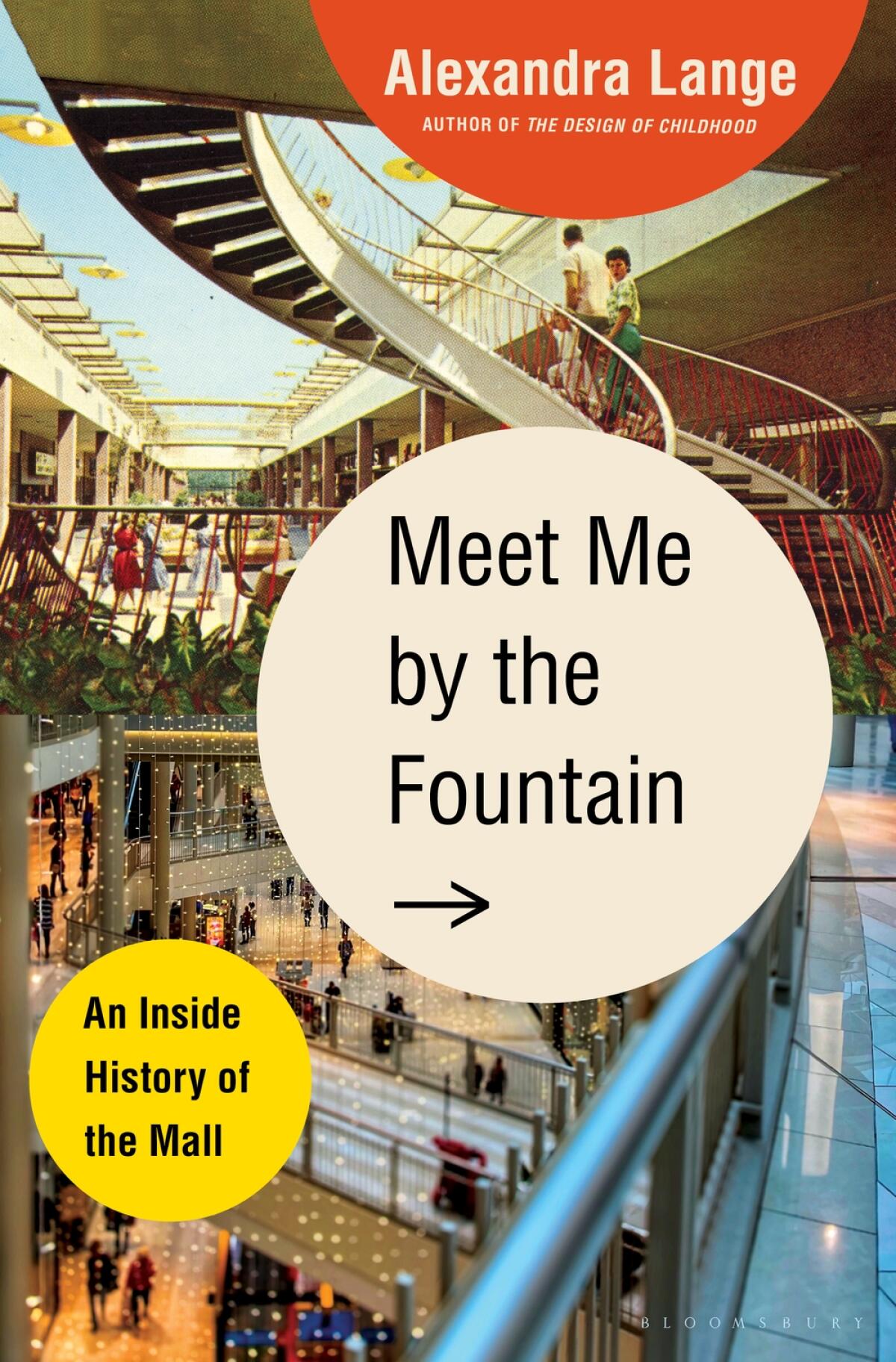
Lange provides a smart and accessible cultural history — outlining the social, economic and architectural forces that led to the creation of U.S. malls as we know them. But she also looks forward. The U.S. is currently “overmalled” — with exponentially more retail square footage per person than places such as China or the United Kingdom. In recent decades, dead malls have proliferated, functioning as sets for zombie flicks and inspiring chroniclers of urban decay. (The hashtag #deadmall features tens of thousands of images on Instagram.)
The High Museum ruminates on love — platonic, romantic, spiritual. Plus, Persian art at the Getty and a tenor takes a final bow, in our weekly arts newsletter.
Lange, however, isn’t ready to declare the mall dead.
“In the rush to dance on the mall’s grave, we risk treating the mall as only a disposable consumer object and neglecting the basic human need it answered,” she writes. “We also risk throwing away the ever more valuable resources of space, material, and familiarity built into the DNA of the mall.”

Malls have, for example, been successfully converted into community college campuses.
Others have made comebacks as malls in a different guise. Lange cites the case of Plaza Fiesta in suburban Atlanta, which began life in the 1960s as a strip mall, grew into an outlet mall and is now geared toward Latino immigrants. The mall features a single anchor store (Ross Dress For Less) while the rest is given over to Latin American market-style stalls that carry everything from quinceañera dresses to parts for Ford F-150s.
On a recent trip to Atlanta, I paid a visit to Plaza Fiesta. It was packed.
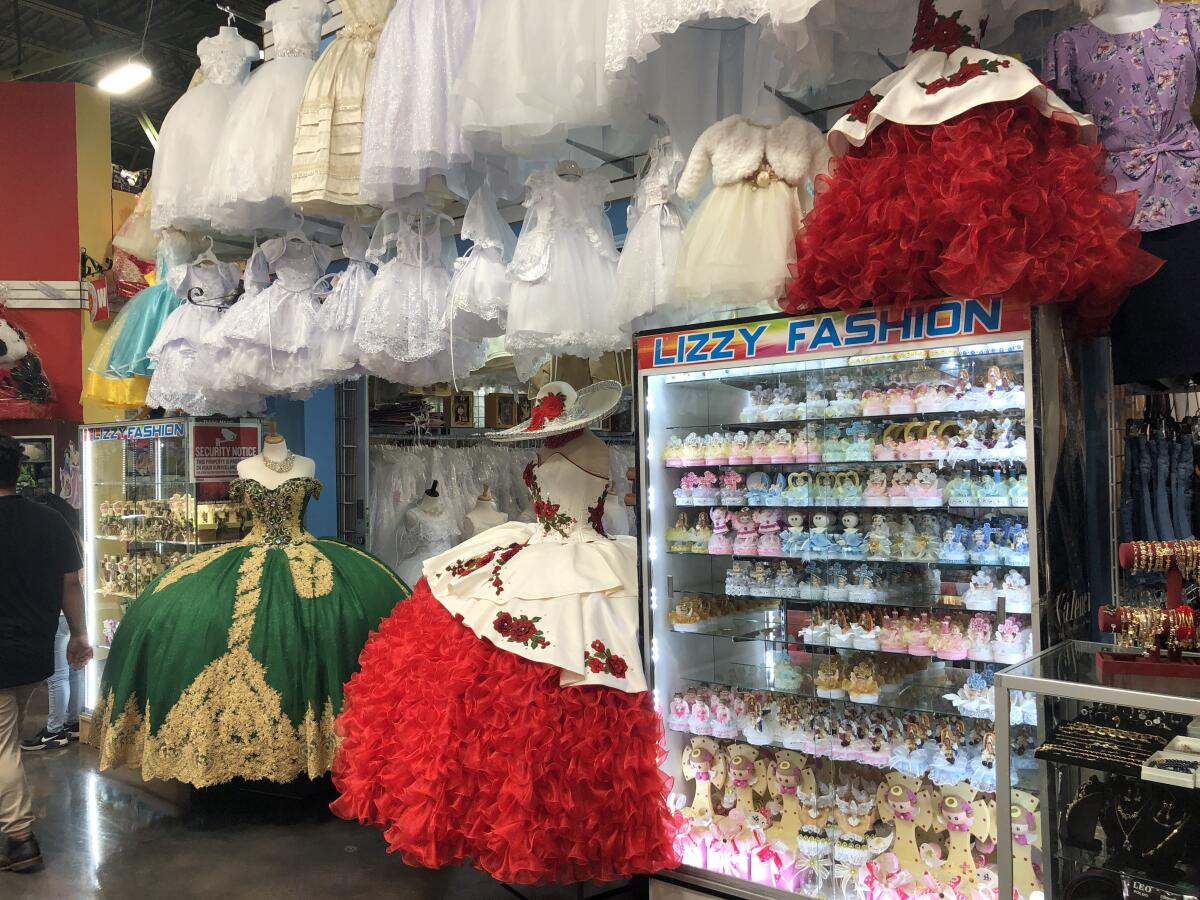
“Meet Me by the Fountain” kicks off with a history lesson featuring some of the characters who helped shape 20th century mall-dom. This includes Austrian-born, L.A.-based workaholic architect Victor Gruen, whose firm helped pioneer the first suburban mall (the now shuttered Northland Center outside Detroit), as well as the first enclosed one (Southdale Center near Minneapolis).
Another star player is developer James Rouse, who, with designers Ben and Jane Thompson, helped turn Boston’s moribund Faneuil Hall into a tourist-friendly marketplace in the 1970s (as well as an early symbol of the gentrification of downtowns).
And, of course, there’s Jon Jerde, the L.A.-based architect whose “experience” malls — including L.A.’s Universal CityWalk and Horton Plaza in San Diego (now being revamped as office space) — gleefully mashed up the architectures of eras and continents in order to create “the most exciting visual narrative in the minimum quantity of space.”
Jerde’s early concepts reportedly drew inspiration from an essay about meaningful public space published by sci-fi novelist Ray Bradbury in The Times in 1970.

But “Meet Me by the Fountain” isn’t just a timeline of dudes with visions of malls dancing in their heads.
Lange has a perceptive eye for how spaces are designed — and for whom. Her previous book, “The Design of Childhood: How the Material World Shapes Independent Kids” (2018), examined the ways in which children and their needs have influenced design. Last year, in a memorable dispatch for Bloomberg CityLab, she wrote about how public space fails teen girls.
The outcropping of residential communities appropriating Renaissance architecture are inspired less by culture than by control. And they’re ugly.
In the new book, Lange examines what malls have meant for women as sites of professional advancement and how mall design — with its broad doors, gentle ramps, plentiful seating and generous air conditioning — can make them hospitable places for seniors to socialize.
She outlines malls’ conflicted relationships with teenagers, some of their most loyal customers. Over the years, malls have beckoned them with arcades and Hot Topics; they have also chased them off with “No Loitering” signs.
“Commercial imperatives accidentally created an architecture that accommodates those who often have the least societal power: the young, the old, the disabled, and the poor,” writes Lange. As malls evolve, she wonders whether they can accommodate these cultural roles “with less ambivalence and more democracy.”
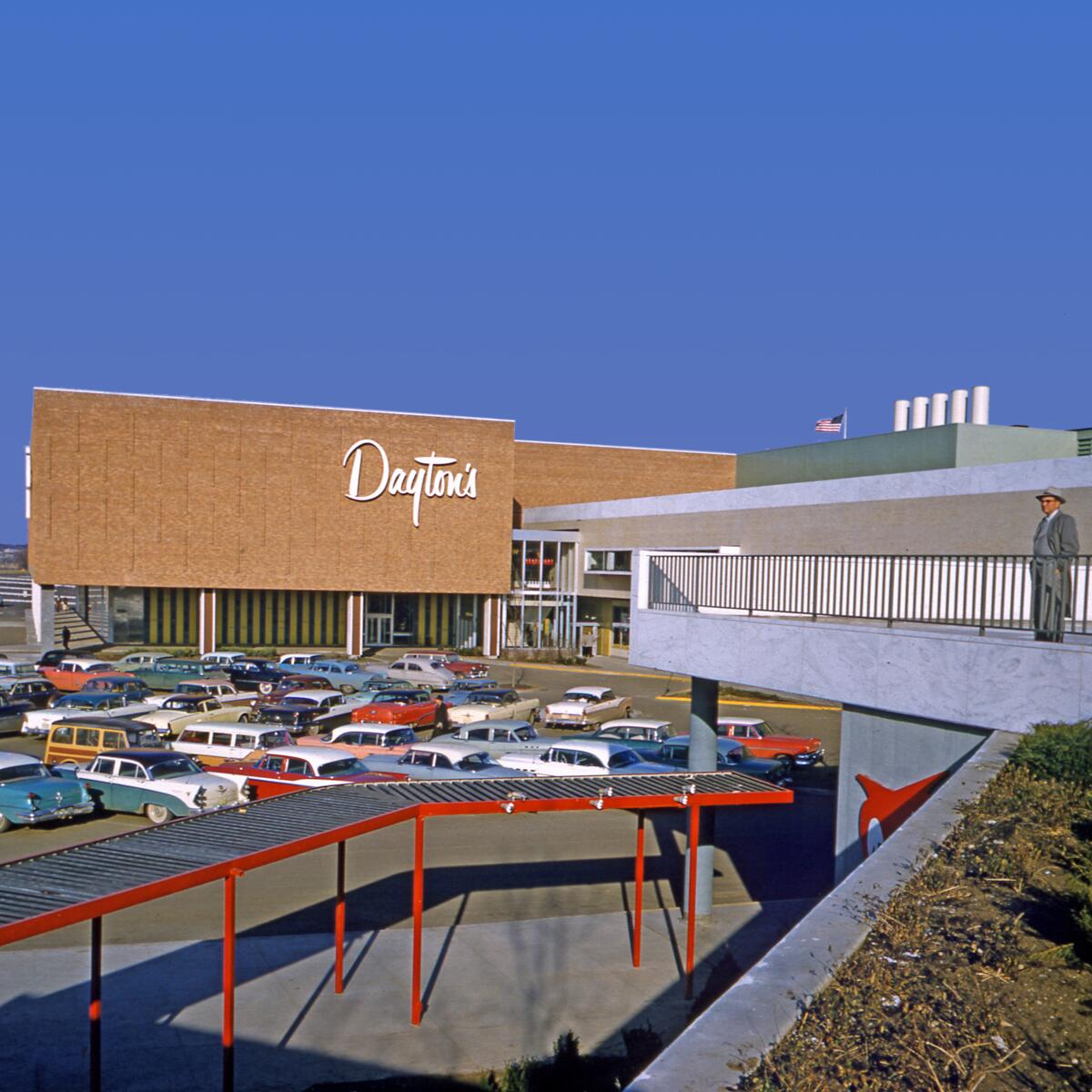
A particularly intriguing thread in “Meet Me By the Fountain” examines malls’ complicity in segregation — de facto if not de jure. In the early years, many shiny new suburban malls were only accessible from city centers by car, which frequently made them off limits to working-class Black and Latino communities.
“In proposing a downtown outside downtown, protected from the elements, ringed by parking lots, designed for a single use and rigidly planned,” writes Lange, “Victor Gruen had also created a mechanism to protect white, upwardly mobile homeowners from those unlike themselves.”
When architecture critic Alexandra Lange first had her children — a son and daughter, now ages 11 and 7, respectively — she says that she found herself, like many parents of infants, contending with an avalanche of stuff: toys, dish ware, clothing, furnishings and assorted accoutrements.
The white middle-class shopper, in fact, remains the idealized mall customer to this day. (Caruso’s malls are mostly located in upper-class, majority white enclaves.)
This is true even for the owners of malls that now serve nonwhite communities.
“The Black mall became Black not with intention but by default,” writes Lange. “Investment capital fled to chase white shoppers, and malls built for their use ended up serving the Black consumer ... There’s typically little care for what the mall has become; private equity wants to make it back into a white mall.”
In Los Angeles, that scenario is playing out at Baldwin Hills Crenshaw Plaza, a mall that has served a Black customer base for decades (and which was financially battered by the pandemic). A Black community group, Downtown Crenshaw Rising, made a bid for the mall, but the owners ultimately sold the complex to Harridge Development Group, a luxury developer that wants to add apartments, condos and a hotel to the site.
As Damien Goodman, who sits on the board of Downtown Crenshaw Rising, wrote in a letter to The Times about the sale: “Too often, modernization is code for displacement.”
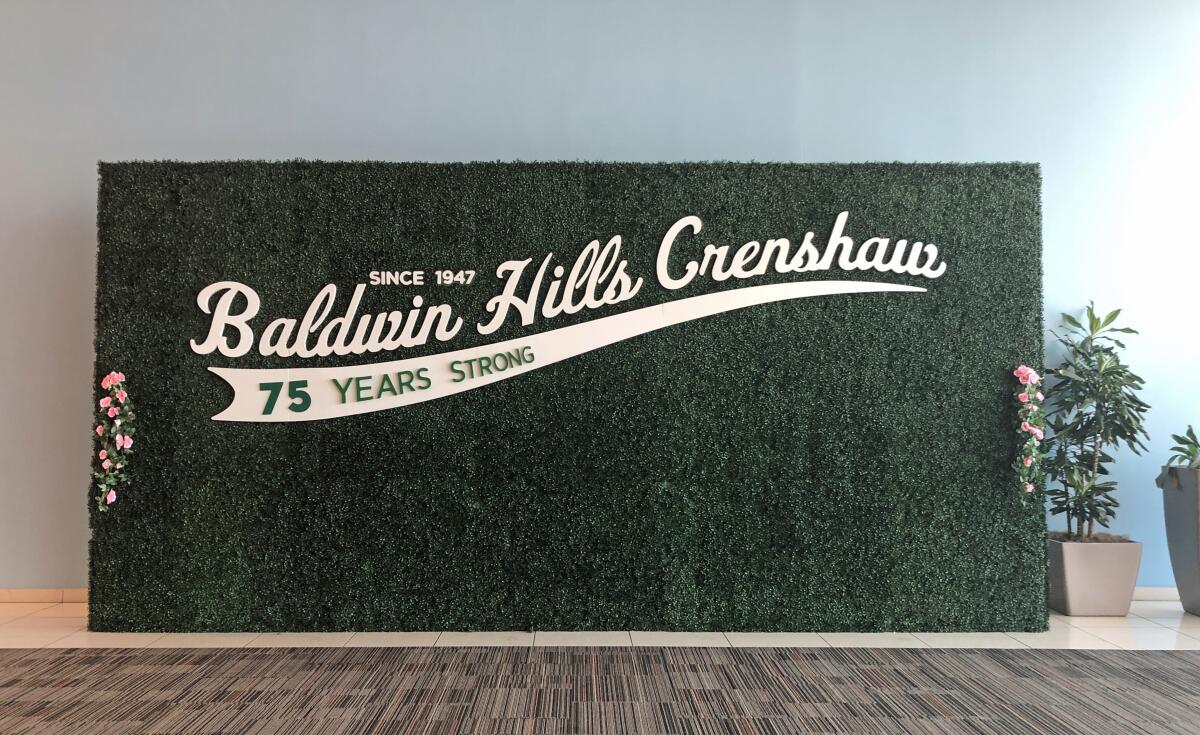
The luxury arms race is not the only way to revive a mall. This is the topic to which Lange devotes the last chapter of her book — looking beyond the U.S. to malls in Latin America and Philippines, where they are booming. As opposed to drowning in oceans of parking, malls in those regions are frequently hooked up to mass transit. Instead of chain department stores, the focus is frequently on smaller, independent and more varied retail shops.
“To survive,” she writes, “the American mall has to shed many of the qualities that defined it for decades: no department store anchor, less catering to an imagined middle-aged, middle-class white female shopper, more public transportation, more density.”
Lange doesn’t have a false nostalgia for malls. “Meet Me by the Fountain” is frank about how they have usurped public space. But at a time when malls still serve the function of bringing us together, Lange’s book is a thoughtful guide to helping them do what the best of them already have — but better.
More to Read
Sign up for our Book Club newsletter
Get the latest news, events and more from the Los Angeles Times Book Club, and help us get L.A. reading and talking.
You may occasionally receive promotional content from the Los Angeles Times.
